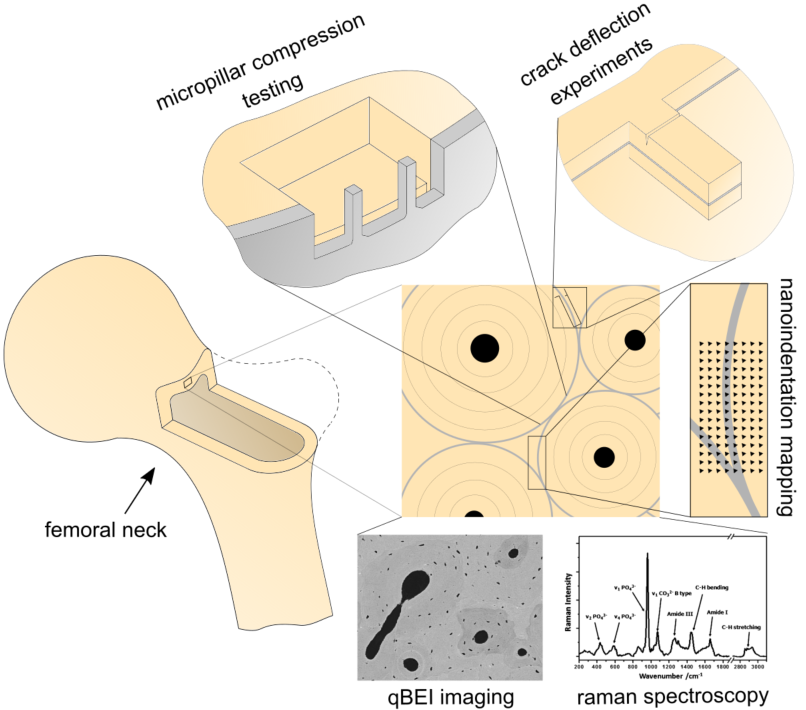COHESION – Composition and mechanics of cement lines in cortical bone

Bone shows remarkable combinations of stiffness and fracture toughness considering its rather soft (collagen) or brittle (hydroxyapatite) constituents. The reason for this property amplification lies in the hierarchical structure of bone and the accompanying toughening mechanisms. One such important mechanism is the deflection and arrest of cracks in cement lines, very thin sheets (thickness 1-5 µm) surrounding osteons in cortical bone microstructure. Due to experimental challenges as a result of their small dimensions, the composition and mechanical properties of cement lines has not been investigated in detail yet, despite their crucial role in bone as crack deflector.
In this project the composition and properties of cement lines in human cortical bone are investigated as a function of donor age, tissue age, health status (healthy vs osteoporotic donors) and protein crosslinking. Due to the small thickness of cement lines, different nanomechanical testing techniques (Nanoindentation, micropillar compression, microfracture experiments) are utilized at FAU to explore the mechanical properties and the amount of energy dissipated when a crack gets deflected or arrested at cement lines. Moreover the crosslinking of proteins in the cement lines are artificially raised using biochemical treatments to explore the effect on the above mentioned mechanical properties.
This Weave-Project is funded by both DFG and FWF (Austria) and is in cooperation with the Institute of Lightweight Design and Structural Biomechanics at TU Wien.